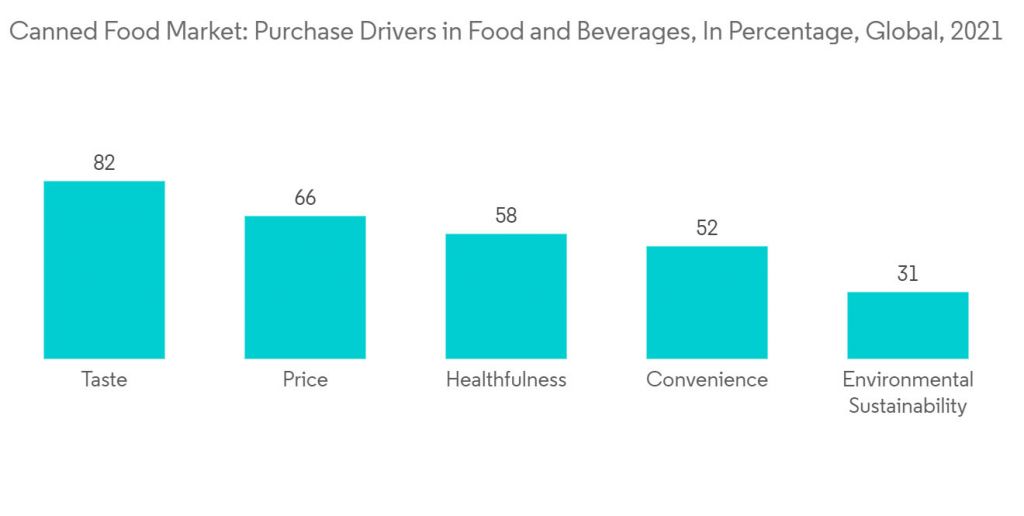The Report Covers Canned Food Companies and the Market is segmented by Type (Canned Meat Products, Canned Fish/Seafood, Canned Vegetables, Canned Fruits, and Others), Distribution Channel (Supermarkets/Hypermarkets, Convenience/Grocery Stores, Online Retail Stores, and Other Distribution Channels), and Geography (North America, Europe, South America, Asia Pacific, and Middle East & Africa). The market size and forecasts are provided in terms of value (USD) for all the above segments.
Canned Food Market Size

Canned Food Market Analysis
The Canned Food Market size is estimated at USD 85.56 billion in 2023, and is expected to reach USD 104.35 billion by 2028, growing at a CAGR of 4.05% during the forecast period (2023-2028).
Canning is the process of preserving food products and extending their shelf life. Canned products are used in many countries in extensive quantities owing to their benefits. Canned foods reduce the spoilage of food because of external factors like sunlight, air, or insects. Canning preserves the nutrients of the food as it is. Many fast-food chains and restaurants use canned foods like corn, tomato purees, and many more owing to their convenience and longer shelf life. Major players like Campbell’s, Del Monte, Nestle, and many other companies relaunch their older products with new packaging or logos to attract consumers’ attention. For instance, in November 2021, Campbell Soups relaunched its Campbell’s Condensed Soup with a new logo, packaging, and visual identity.
The market is mainly driven by the rising urban population that prefers easy and convenient food and the demand for healthy food rich in protein, functional fibers, vitamins, and omega-3 fatty acids. Consumers who are willing to spend a little more for the products offering such properties, coupled with the demand for small, easy, ready-to-cook meat and seafood and organic canned fruits and vegetables, are thus fueling market sales. Furthermore, the rising awareness of the ills of plastic packaging and the demand for a sustainable solution, as well as the increasing recycling rates globally, have been further driving the market. The rising number of food retail outlets, along with increasing urbanization, research and development investments, and marketing strategies used by the players in the canned food market, is expected to have a positive effect on the overall revenue of the global canned food market.
Increasing Demand for Convenience Food
Convenience is the key factor driving the growth of canned food consumption across the world, coupled with increasing disposable income and the rising number of working women. Because of their hectic lifestyles, consumers’ preference for convenience food products has grown in recent years. Due to the retention of high amounts of nutrients, color, and flavor, canned foods have become one of the most preferred preserved foods among consumers. Changes in lifestyles, coupled with increased expenditure on food and beverages, lead to a significant dietary transition among consumers, marked by increased demand for animal-sourced food, fats and oils, refined grains, and fruits and vegetables.
People with busy life schedules, especially those who lack cooking skills, fatigue due to the fast lifestyle. Changes in consumers’ demography are the major factors driving the convenience foods market. The market sentiments for food and beverages indicate a strong correlation between the sales of food and the degree of convenience they offer. Canned foods are purchased based on several factors. However, the most important among them is convenience. Convenience is also regarded as a major value addition for all canned foods.

